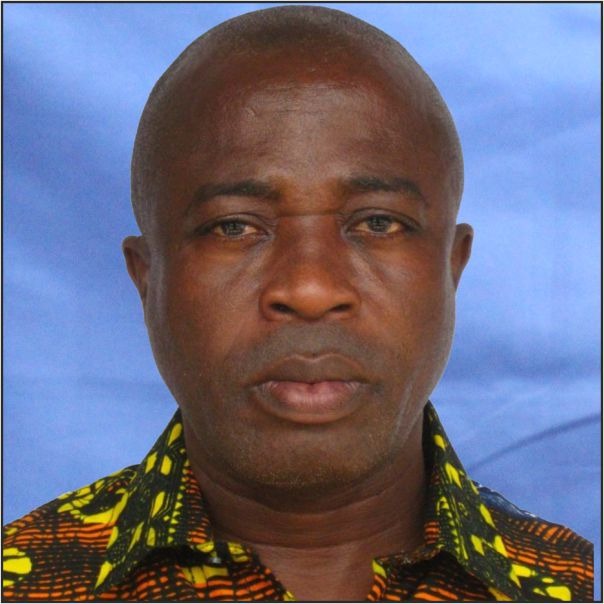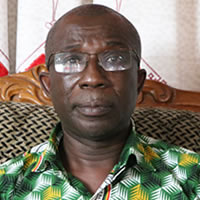Location and size of the Municipal Area
The Offinso Municipal Assembly lies approximately between latitude 7o 15’N and 6o 95’N, and between longitude 1o 35’ and 1o 75’ West. It is situated in the northern part of the Ashanti Region and shares common boundaries with Offinso North District Assembly in the North, Afigya Kwabre in the East and South, Atwima Nwabiagya and Ahafo Ano South District Assemblies in the West. It covers an estimated area of 600 sq km. The municipal capital is Offinso. Figure 1 shows the municipal map and the neighboring districts.
The Municipality’s proximity to the Kumasi Metropolis provides a big potential market for variety of agricultural produce. The Offinso Municipality should take advantage of this potential market to diversify and increase agriculture production. However the following disadvantages are associated with the municipality’s proximity to Kumasi.
· Good agricultural lands are gradually being lost to urban settlement development (housing, commercial activities and sand winning)
· The municipality is a receptor of the spillover of the Metropolitan crimes and other social vices
· Increased level of unauthorized development of physical structures
Measures are therefore required to continue to exploit the advantages and to manage the disadvantages associated with the municipality’s location.
Topography and Drainage
Topographically, the land in the Municipality is generally undulating with the highest elevation of about 100m above sea level. The high lands have gentle to steep slopes. There are a number of waterlog areas and wider valleys with no evidence of stream flow. These waterlog areas and dry valleys provide opportunities for rice, sugarcane and vegetable cultivation.
The Offin is the main river which drains the surface area of the municipality. However, there are about sixty-four (64) streams in the municipality, most of which drain into river offin. These include prebuo, agyeimpra, sunyen, amoadem, akwaasua, abuasu, ayensu, anyankasu, asutam twum, waamu, kookra, kayera, etc. The rivers and streams contain considerable quantity of mud fish, tilapia and other edible fish species.
Farming activities are carried out close to the banks of most of the rivers and streams, thus increasing siltation and considerably lowering volume of water in some of them. In the dry season most of the streams are reduced to series of disjointed pools. Rivers and streams, which flow through major settlements, have also been polluted due to the discharged liquid and solid waste into them. Measures are required to properly manage the water bodies in the municipality for sustainable livelihood and environment.
Climate and Vegetation
Climate:
The Municipality experiences Wet Semi-Equatorial type characterized by moderate to heavy rainfall annually with temperature ranging between 21ºC and 32ºC. The rainfall regime is double maxima with annual rainfall between 125 and 175 centimeters. The average annual rainfall is 953.40mm. The major rainy season usually occurs between May and June, followed by a dry spell between August and September. The minor rains occur between September and November followed by dry harmattan till February.
Rainfall in the municipality is not distributed throughout the year. It is also not very reliable. It is therefore not safe to rely solely on rain fed agriculture. Agriculture within the municipality must incorporate soil and water conservation measures at all times to ensure all year farming, good yield and sustainable income for farmers.
Vegetation:
The predominant vegetation type in the Municipality is mainly moist semi-deciduous forest which is interspersed with thick vegetation cover. Tree species found in the forest are wawa, cedar, odum, ofram, emire among others.
Logging, inappropriate farming methods and bush burning have reduced the original forest vegetation to secondary forest in most parts of the Municipality. The 1983 bush fire burnt farms in Asuboi and Kwapanin areas. There are six forest reserves in the municipality. These are: Asufu East, Asufu West, Giamaian, Kwamisa, Opro and Afram Headwaters. Part of Opro and Afram headwaters share boundaries with the Offinso North District. Most of these reserves serve the purpose of water shed protection.|
The existence of the forest reserves in the municipality is a potential for providing timber for the building and the construction industry. The Assembly also earns revenue in royalties (stool lands) and from legal timber firms operating in the forests as concessions and from saw millers. The Assembly should therefore enforce the ban on illegal timber activities in the forests. As a measure to conserve forests, effort should be made to promote the use of alternative sources of fuel such as gas. Protection given to rivers and streams by the forests implies that there will be water in the rivers and streams courses to be harnessed for irrigation purposes.
Soils
Soils in the municipality are developed from the Cape Coast Granites and Superficial Deposits.
The predominant soils in the municipality are the Kumasi-Asuansi/Nta-Ofin Compound Associations and the Boamang-Suko Simple Associations.
The Kumasi-Asuansi Compound Associations developed over Cape Coast Granites are generally medium to coarse textured, good structured and moderately gravel. The soils have a fairly high moisture holding capacity but are marginal for mechanical cultivation. Hand cultivation is recommended. The soils are suitable for tree and arable crops such as cocoa, citrus, coffee, oil palm, mangoes, guava, avocado, maize, cassava, yams, cocoyam, plantain, banana, pawpaw, groundnuts pineapple and ginger. The valley bottom soils are good for the cultivation of rice, sugarcane and vegetable.
The Boamang-Suko Simple Associations are developed over Superficial Deposits. They are generally medium-textured, non-gravel, moderately deep to very deep and well drained. Their moisture holding capacity is fairly high, although surface layers are susceptible to dry season
drought. The soils are very good and suitable for all the tree and arable crops already mentioned under the Kumasi- Asuansi/Nta-Offin Compound Association. Soils of the Kumasi-Asuansi Compound Associations and the Boamang–Suko Simple Association are the most suitable agriculture lands in the Ashanti Region. These soil types are limited to Abuakwa areas (in the Atwima Nwabiagya District), parts of Ejisu- Juabeng , Bekwai, Edubiase, Agona and Jamasi areas and the whole of Afigya Kwabre District, Offinso Municipality and Offinso North District.
Heavy residential and commercial developments and sand winning activities have taken all of these very good agriculture lands at Abuakwa, Kumasi and Ejisu, and huge portions at Bekwai, Agona and Afigya Kwabre. The practice is pushing gradually into the Offinso Municipality. The region’s agriculture base is gradually being degraded. Measures such as enactment and enforcement of bye-laws and creation of conurbations are required to protect what is left of these good agriculture lands and the many people whose livelihoods depend on it.
Geology
The land area in the Municipality is underlain by Voltain, Birimian and the Ceranite rock formation. The Voltain rocks are found in the north-east around Kwapanin. The Birimian rock types are mainly schist and gneiss and are found in the south-western part of the Municipality in Bonsua, Kensere, Gambia and Wawase. Granite is found in the southern and south-eastern portions of the Municipality, stretching from Nyamebekyere through Anyinasuso to Tutuase. The granite rocks form the basis of high potentials for quarry stones. The Municipality is also endowed with substantial deposits of gold, sand and clay.
The granites, clay, sand and gold deposits are of considerable economic importance for road construction, building, ceramic production and revenue generation. However, the exploitation of these resources (especially gold mining, sand winning and quarry) must be checked to reduce environmental hazards and economic/social deprivation associated with it.
Condition of the Natural and Built Environment
Conditions of the Natural Environment
The impact of socio-economic development on the environment and climate change is still a major concern worldwide, and the need to incorporate environmental issues in planning cannot be overemphasized. The natural environment of the Offinso Municipality has changed markedly due to human activities. The forests, rivers, soils among others have all been negatively impacted. Human activities that have impacted on the environment of the municipality are indiscriminate lumbering, crude farming methods, uncontrolled sand winning activities, charcoal and fire wood extraction, bush fires, mining, etc. The net effect of these activities has been the reduction in vegetation cover, pollution and siltation of water bodies and depletion of animal species, loss of good agriculture lands.
The forest of the municipality with its rich fauna and agricultural lands, which has been the major source of timber and crop production, has gradually lost its once enviable evergreen vegetation. It is very important therefore to manage the impact of human activities on the environment to promote natural resource sustainability.
Condition of the Built Environment
Majority of the settlements do not have layouts and this has led to haphazard development. Offinso is the only settlement that has layout. Even here, planning and building regulations are not adhered to. About 75% of the houses are compound and are mostly constructed with sandcrete, landcrete and mud. Corrugated metal sheet is the main roofing material followed by palm leaf. The urban and peri-urban enclave of the municipality is characterized by numerous uncompleted buildings and acquired but undeveloped land parcels. These create conducive hiding places for criminals.
The housing environment in the Municipality, especially Offinso New Town and Abofour townships is characterised by poor drains, heaps of refuse dumps, unkempt surroundings, exposed foundations due to pronounced erosion and cracked walls especially in the rural areas.Only about 12% of the households in the municipality have access to internal toilet facilities. About 47% of the occupants depend on improved public toilets facilities such as WC, Aqua Privy and KVIP. Nearly 41% of households in the municipality rely on pit latrines and open defecation. Waste water is mostly disposed of at open spaces because of inadequate drainage systems.
Solid waste generation in the municipality exceeds the capacity of the Municipal Assembly to manage it. As result many households in the municipality practice indiscriminate dumping of solid waste. There are also scenes of refuse heaps, which serves as breeding grounds for mosquitoes and other bacteria. The generally poor sanitary conditions in the municipality pose serous risk to human health. Most of the top ten (10) cases of diseases recorded in the municipality are related to poor sanitation and hygiene.
Potable water supply in the municipality is highly inadequate. Apart from Offinso which has access to pipe-borne water, all the other communities rely on bore holes, wells, ponds and streams for drinking and domestic use.
The Volta River Authority (VRA) and Electricity Company of Ghana are responsible for power supply in the municipality. Electricity coverage in the municipality is about 80%. Most of the settlements currently without electricity are located in remote parts of the municipality, making it extremely difficult and cost-ineffective to hook them onto national electricity grid.
Generally, high level of environmental degradation (resulting from poor farming practices, illegal logging and sand winning), poor sanitation in urban areas, haphazard erection of physical structures in built environment due to lack of adherence to and enforcement of physical planning/development rules, high level of erosion in settlements, poor drainage systems and poor access roads within built up areas all impact negatively on the natural and built environment of the municipality
.
Climate Change
Increasing concentration of greenhouse gases (i.e. carbon dioxide, water vapour, methane, nitrous oxide, etc.) in the atmosphere has resulted in increased global warming, the impacts of which are being felt both globally and locally. There is evidence of the adverse effects of climate change in the Offinso Municipality. These include erratic rainfall patterns, storms, altered
patterns of agriculture and associated crop destruction/ failures, intermittent flow of streams, and increased cases of malaria. These changes are threats to food production, human survival and development, natural systems, and in fact the achievement of the development priorities of the municipality.
There is therefore the need to look for ways to reduce the vulnerability of natural and human systems to climate change effects, and also reduce the emission of greenhouse gases or enhance the removal of these gases from the atmosphere. Development effort of the municipality must therefore be compatible with this aim.
Date Created : 11/27/2017 2:30:07 AM





